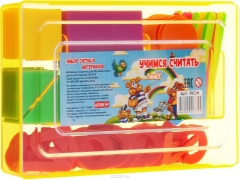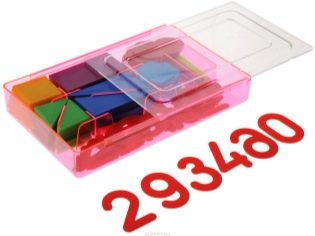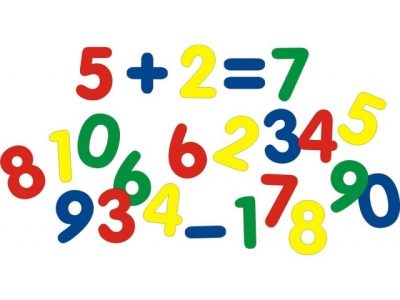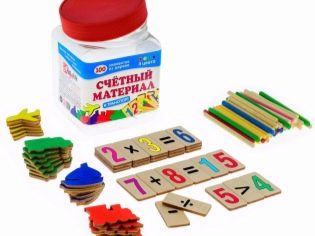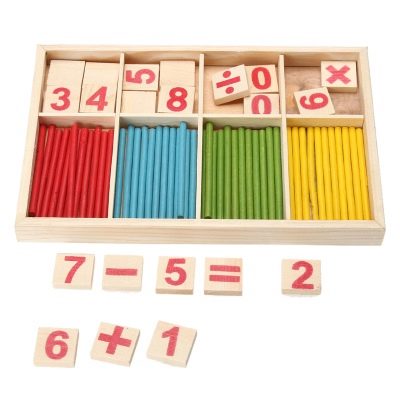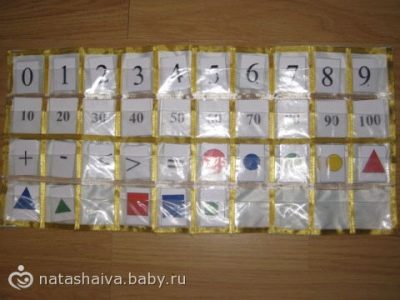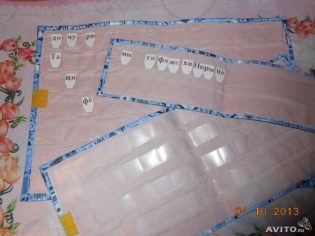Cashier of accounting materials "Learn to count"
“Learn to count” counting materials are important when studying numbers and accounts. Learning to count with them is much easier and more entertaining. It will be interesting to use them to kids and children who have already gone to school.
What it is?
Cash register materials often consists of numbers from 0 to 9 and various mathematical symbols. It is interesting to start the first numbers and counting with precisely calculating materials. They are a great way to learn. Bright, with lots of pictures and task cards - they will carry away your child for a long time. Visibility and understandable images will improve memorization, the baby will have associations with numbers and actions on them.
This ticket is suitable for kids from three to eight years. The game is safe for children, as it has rounded corners and is made of non-toxic material. Initially, the sets are sealed and are in a convenient box for carrying and storage.
Kinds
Manufacturers produce the following varieties:
- numbers. They contain a set of numbers and mathematical signs - plus, minus, more, less, equal. The kits contain tasks for execution, a card with numbers and a corresponding number of items;
- sticks. A simple countable set for adding and subtracting numbers. Can be sold separately or in a set with tasks;
- combined sets. The most popular among buyers, as they include a lot of interesting elements - a digital series, cards, calculating sticks, signs of mathematical operations, tasks and even geometric figures.
Manufacturers
The most popular are the following:
- Cash desk of calculating materials “Learn to count” from Fancy. An interesting and complete set for learning - numbers, sticks, geometric shapes. All this is in a transparent case, easy to carry, it has three colors - orange, pink and light green. There is a variation in the simple package. It is safe, because the elements have rounded corners and are made of safe materials.
- Magnetic cash box "Numbers and signs on magnets". There are several repeating numbers from 0 to 9 and various signs in the set. It is convenient because you can attach magnets to a metal surface, and even if there is no magnetic board at home, you can use a refrigerator.
- Cashier counting materials from Stamm. Includes counting sticks, arithmetic signs, numbers, geometric shapes - from simple squares and triangles to sets with a pentagon and complex shapes made of safe material (polystyrene). All items are in a plastic box.
Ways of learning
Depending on age, there are the following:
- For the little ones. For children of three years, such sets will serve as a toy, they will help to take the first steps towards learning to count and understand numbers.
- Sticks. It is possible to keep the score not just by shuffling the sticks, but also by folding the numbers from the sticks. So baby learns to portray the numbers that is the key to correct spelling.
- We compare. Start small - compare pictures between themselves. Then go to the number and picture, add geometric shapes. So each time complicate the task.
- We consider. Create a combination of numbers and sticks (for example, 2 + 2), place the sticks at the bottom and compare the result of the calculation on the fingers and the calculation of the sticks. Add and subtract, perform tasks from the cards.
Do it yourself
You can make a simple counting office with your own hands, but no less effective. You can use absolutely any material - paper, wood, fabric:
- From the tree. You will need a jigsaw with thin nozzles and a sheet of plywood. Cut out numbers, signs and shapes. Be sure to sand the edges. Finished elements can be painted in bright colors along with the baby.
For storage, you can also make a small box.
- From paper. For the basics we take a folder or cardboard sheet. We glue strips of paper on them to make pockets. Next, print or write signs, numbers, shapes and cut them to the size of the pockets. During the lesson, lay out the numbers and signs on the pockets and deal with the child. Suitable for adult children, students in grades 1-2.
- From fabric. Interesting toy for practice. A great option for kids, as a soft cloth to hurt yourself will not succeed. We sew a base with pockets in the likeness of a cash register from paper. Pockets can be sewn from tape or strips of fabric. Inserts can be made of paper, you can use embroidered figures on a piece of fabric. You can cut the numbers and sew them to a fabric card.
To make the fabric more convenient to move and work with the material in the future, it is better to make a cardboard lining.
Cashier counting materials - a very useful and entertaining thing. Whether it is a cash desk from Fancy, Stamm or handcrafted, it fulfills its main goal - it teaches the child about counting and performing mathematical operations.
An example of lessons with counting sticks, see below.
